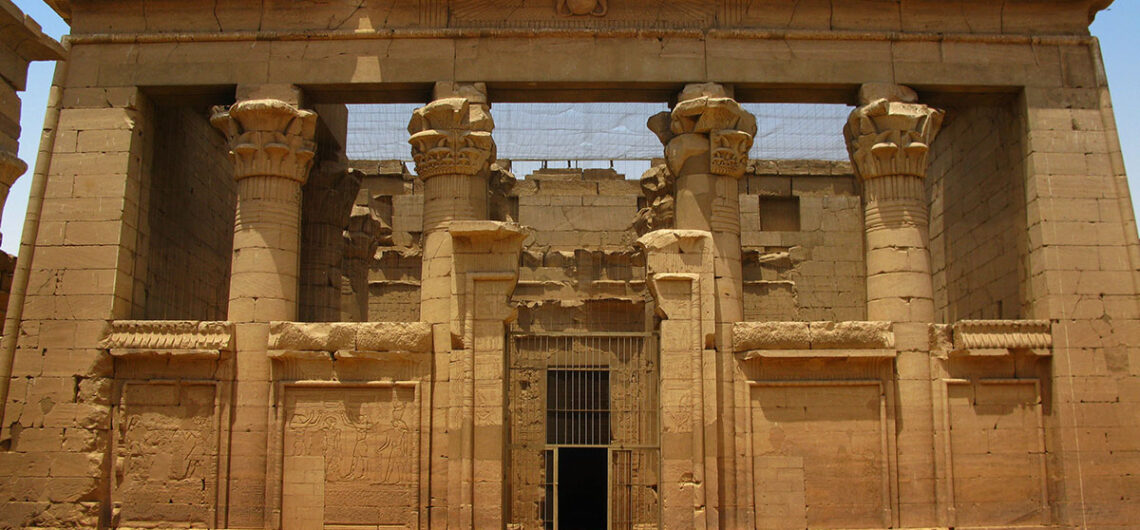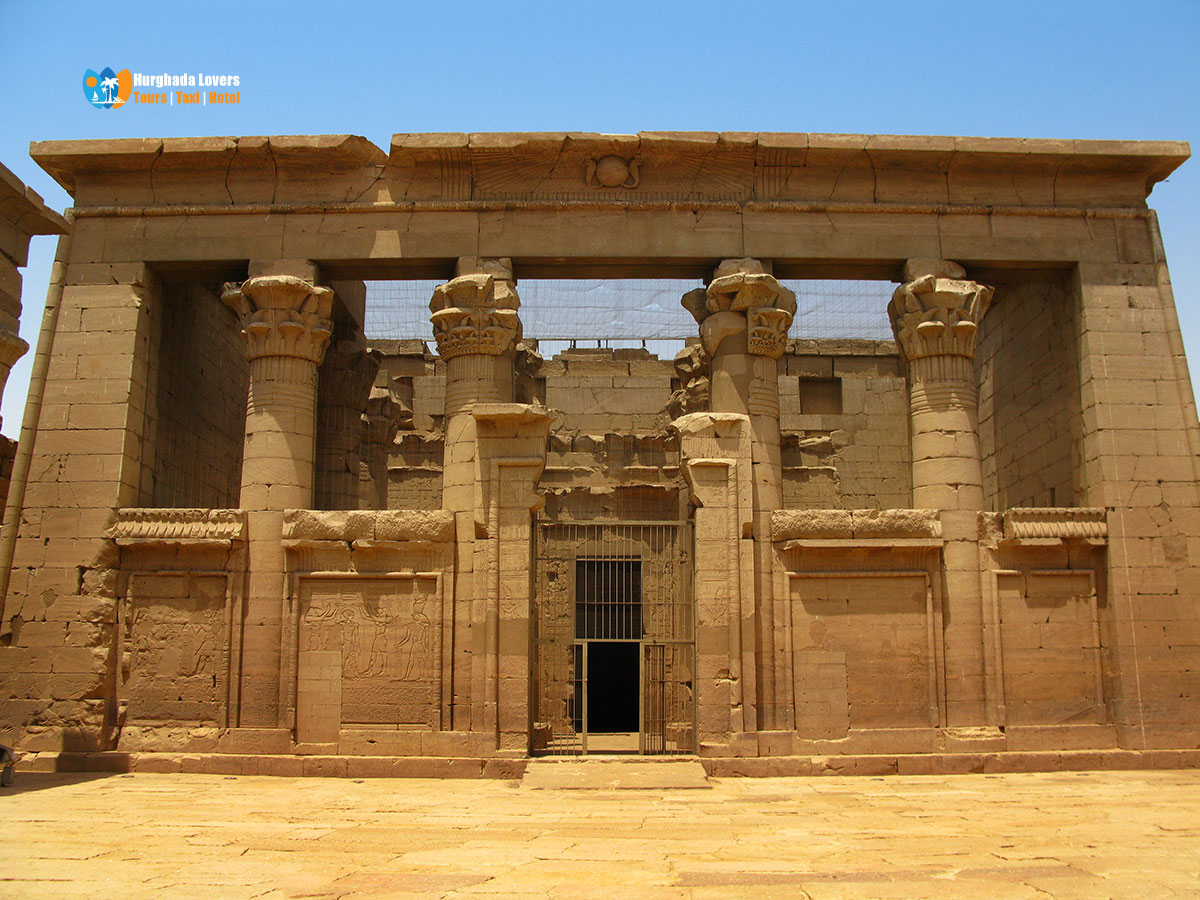Kalabsha Temple in Aswan, Egypt – Egyptian Temples
The most important Egyptian temples and Pharaonic Egyptian Monuments in Nubia in the ancient Egyptian civilization and what are the secrets of building the Mandolis Temple and the interior design and engravings.
Tell us the culture and history of the Pharaonic civilization “Ancient Egypt History” and more to visit the tourist attractions in Egypt in addition to the wonderful tourist attractions in Aswan.
Kalabsha Temple Facts
Date of construction: 30 BC.
Length: 76 meters
Width: 22 meters
In what era was the temple built?
The Temple of Kalabsha was built during the reign of Imperator Augustus Caesar during the Greek-Roman era, the most famous of the Egyptian Pharaohs kings.
What are the reasons for building the Kalabsha Temple?
Worship of the god Mandulis, the sun god of Nubia, who represents the God Horus for the ancient Egyptian pharaohs..
Worship of a group of Ancient Egyptian religion beliefs as in the religion of the Egyptian deities – Ancient Egyptian gods and Goddesses such as the ancient Egyptian God Amun–God Ra, God Isis, God Osiris, theGod Khnum, and God Shu.
What is the importance of Kalabsha Temple?
The second largest Mortuary Temples was moved from its original location to another location after the Temple of Abu Simbel was moved, which was built by King Ramses II for his wife, Queen Nefertari, the most famous queen of Pharaonic Egypt “Female Pharaohs” from the Nineteenth Dynasty of Egypt during The New Kingdom period..
Kalabsha Temple contains architectural designs in ancient Roman-Pharaonic architecture to indicate the development of Sculpture in Ancient Egypt and Architecture in ancient Egypt.
Twice a year, the phenomenon of the sun’s rays falling perpendicularly on the Holy of Holies occurs, on February 14 and October 29..
The temple was submerged under the waters of the Nile River after the construction of the High Dam in Aswan.
The process of moving the temple from its location in Lake Nasser to its current location took two years, in 1975 AD, with a grant from Germany..
The temple was transformed into a church in the ancient Egyptian Coptic period.
Pigs are not allowed to enter or raise them inside the temple..
Kalabsha Temple was built on the ruins of the demolished Temple of Amenhotep III, which was built during the reign of King Amenhotep III, one of the famous pharaohs of Eighteenth Dynasty of Egypt. It was formerly called the Nubian Karnak Temple.
The temple was moved to Khor Angi Island, in a remote area south of the Aswan High Dam..
What does the word “Kalabsha” mean?
The word Kalabsha means “talmis” in Ancient Egyptian Language, and “talmis” in Greek..
Temple construction stages:
King Thutmose III built a small funerary temple inside the Kalabsha Temple..
King Amenhotep II completed the entire temple..
The idle kings were interested in building columns and large courtyards.
Emperor Augustus completely rebuilt the temple into its present form..
The Roman Emperor Gaius made drawings and engravings on the lintel of the main gate entrance..
Map of Kalabsha Temple from the inside:
Made of sandstone, an Ancient Egyptian Metallurgy found only in Nubia, the temple was moved to the western shore of the Nile River overlooking Lake Nasser in 1970 from its original location 55 km south of Aswan to build the High Dam..
The Kalabsha Temple consists of a large edifice with a large gate that directs you to a courtyard and then a columned hall, where you will see Greek inscriptions on its stone curtains, and then it leads to the Holy of Holies..
The Kalabsha Temple is surrounded by 3 corridors. You will find the birth chamber southwest of the temple, dedicated to Isis, in addition to a chamber northeast of the temple..
You will also see a two-towered structure for placing flags during celebrations, then stairs inside each tower that direct you to 3 rooms, each room on top of the other..
The temple includes a large gate with a height of 9.70 m. At the top of the gate are engravings of the sun disk and drawings of King Ramses offering sacrifices to the goddess, in addition to Nubian artifacts of the Ptolemaic shrine and the Beit el-Wali temple and engravings showing victories over the Nubians, Ethiopians, Asians and Libyans to indicate the strength of the Military of ancient Egypt.
You will also see in the Kalabsha Temple engravings on the hills of King Ramses II during the wars and military battles he led. You can reach the Kalabsha Temple by taxi or boat, depending on the water level of the Nile River at the time..
The temple is accompanied by a group of small temples, which are::
Temple of Beit El Wali:
It was built during the reign of King Ramses II and consists of an open courtyard, a room for the Holy of Holies and a rock hall..
Cliff Hussein Temple:
The temple was built during the reign of King Ramses II..
Stationery cabin:
The cabin was built in the Greco-Roman era in the ancient Egyptian civilization inside the Kalabsha Temple and has an area of 25 square feet. It was restored after being moved in 1963 AD..
Shrine of the Nubian god Dedun:
It is a room carved into the rock and contains a courtyard with granite columns and Pharaonic engravings on the columns to indicate the development of Industry in ancient Egypt.
Kalabsha Open Air Museum:
The museum contains:
King Seti I Stela
Stela of king Psamtik II of the Twenty-Sixth Dynasty of Egypt, Late Period, known as the Black Pharaohs, made of granite.
Prehistoric rock carvings 3000-5000 BC.
Kalabsha Temple Address:
Nubia City, Aswan, Egypt
Kalabsha Temple Visiting Hours:
Daily 07:00 AM – 05:00 PM
Kalabsha Temple Entrance Ticket Prices:
Note: Facts and secrets of the history will be added soon…
Hurghada Excursions Lovers, Best Travel Agency in Hurghada to provide daily tours to visit the Tourist attractions of Luxor by Hurghada to Luxor Tours and Hurghada to Pyramids Trips. Book online when you come to Hurghada, El Gouna, Sahl Hashish, Makadi Bay, Soma Bay, Egypt Tours Packages.
Kalabsha Temple Aswan Egypt | Story of the construction of the most important Pharaonic temples in ancient Nubia.

